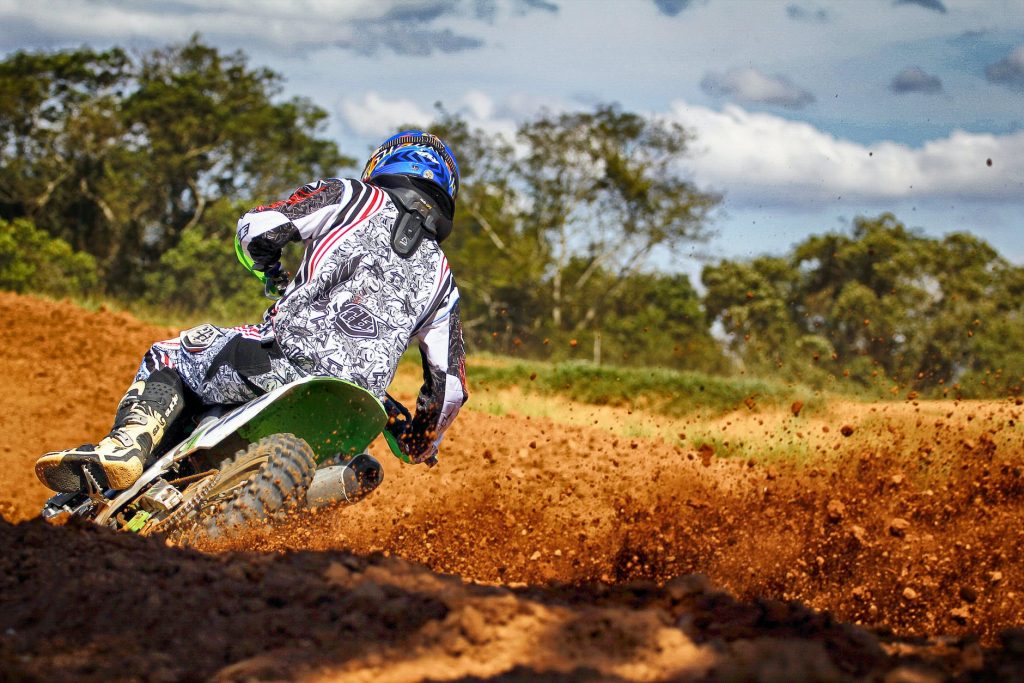
If you’re thinking of buying a dirt bike, you’ll no doubt find that there are bikes available with manual or automatic transmission. If you’re wondering what the differences are between them, this guide will help you.
Manual transmission
Like manual automobiles, dirt bikes with manual transmissions work with the aid of a gearbox and a clutch. When increasing in speed, the clutch is engaged from the left handlebars and the gear change is achieved through pushing down or lifting a foot lever (depending on the required gear), akin to using the clutch pedal and gear stick in a manual car, while also accelerating.
If you gained your car licence on a manual, you’ll know that it can take some practice to coordinate the use of the clutch, gearstick and accelerator, just as it can take time to coordinate the clutch, foot lever and throttle on a dirt bike. If it’s not done properly, it can result in a stalled bike, although the chances of stalling decrease as you become more experienced.
Automatic transmission
As the name suggests, automatic transmission works automatically, without the use of a clutch or foot lever that needs to be operated manually. Unlike cars, fully automatic transmissions aren’t that common on dirt bikes, instead still requiring the use of a foot lever, although without needing to engage the clutch with the handlebars, which therefore means they’re known as semi-automatic transmissions.
The semi-automatic transmission works by the rider pushing down or lifting the foot lever, with the gears becoming engaged automatically (rather than with the clutch lever). This is the same kind of technology that is used for many scooters, the main difference between direct bike and street bikes are being that scooters tend to travel on flat terrains, such as suburban roads and highways, whereas dirt bikes are usually ridden on rough terrain, so the gears may need to be changed more regularly. Given the latter, it would be a good idea to have motorcycle insurance.
Which is better?
Dirt bikes with (semi-)automatic transmission can be a good choice for inexperienced riders who are trying to improve their motorbike-riding skills, as it allows them to focus more on handling, braking and other technical elements before worrying about how to properly coordinate the use of the clutch, foot lever and throttle
If you browse dirt bike websites you’ll see statements that learning to ride a dirt bike with a manual transmission isn’t that difficult, and even that dirt bikes with automatic transmission remove some of the excitement of riding them. Nevertheless, unless you feel completely comfortable riding a manual dirt bike, an automatic can make great sense and allow you to improve your skills.
Several of the main disadvantages of dirt bikes with (semi-)automatic transmissions are: they are generally more expensive than manuals; they are more prone to breaking down due to the greater number of components; they are not as fuel-efficient, and acceleration may not be as quick as with manuals.
The benefits of dirt bikes with manual transmissions are: faster acceleration, even from a standing start or when already moving; better control over different types of terrain; parts are cheaper; and more fuel-efficient.
The main disadvantage of manual dirt bikes is that they can be difficult to master if you’re unfamiliar with manual transmissions, although like with anything, if you practise and have a good teacher, you’ll soon feel more confident and improve your skills, allowing you to ride a manual dirt bike wherever you like.
As riding a dirt bike can be dangerous, it’s best if you have insurance cover in case anything goes wrong. Swann Insurance has cover specifically designed for dirt bikes: https://www.swanninsurance.com.au/products/dirt-bike-cover/.
